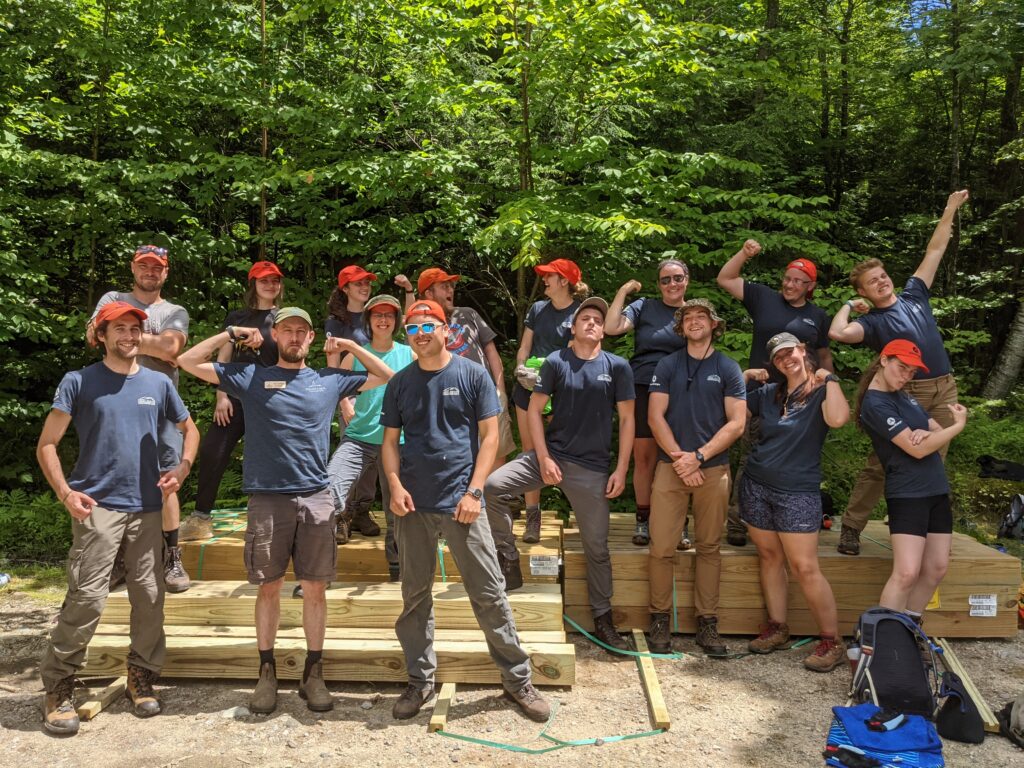What a month it has been! I would like to say that it has all been easy and pain-free, but nothing about conservation field work is easy and my muscles are definitely feeling the burn. Anthony Jaster, fellow NLRA Watershed Steward, and I were given the opportunity to work with other Lake Region Conservation Corp (LRCC) service members to assist with trail maintenance activities, including the replacement of erosion control structures on Rattlesnake Mountain and the clearing of drainage structures on Mount Percival. Going into these activities, I recalled the numerous times I had seen these structures during past hikes, but I had never really paid attention to how they got there or what purpose they served. After spending hours clearing leaves, debris, and mud from drainage structures and carrying eight-foot-long beams up a mountain for the construction of retention walls and stairs, I have a new appreciation for the importance of trail maintenance and the incredible amount of work behind public trails and recreation areas. I ended the experience with the rewarding feeling unique to a hard day of manual labor, with memories ingrained into my brain like the dirt stains on my work pants.

Anthony and I are continuing to grow more comfortable navigating around Newfound Lake by boat as we conduct weekly water quality sampling. Each week as Watershed Stewards, we work alongside community volunteers to collect water quality samples that measure chlorophyll levels, temperature profiles, water transparency, and phosphorus, from designated areas around Newfound Lake. While we have had a few setbacks and mechanical malfunctions along the way, we have successfully worked as a team to set out on our first few solo outings and reach our monitoring goals.

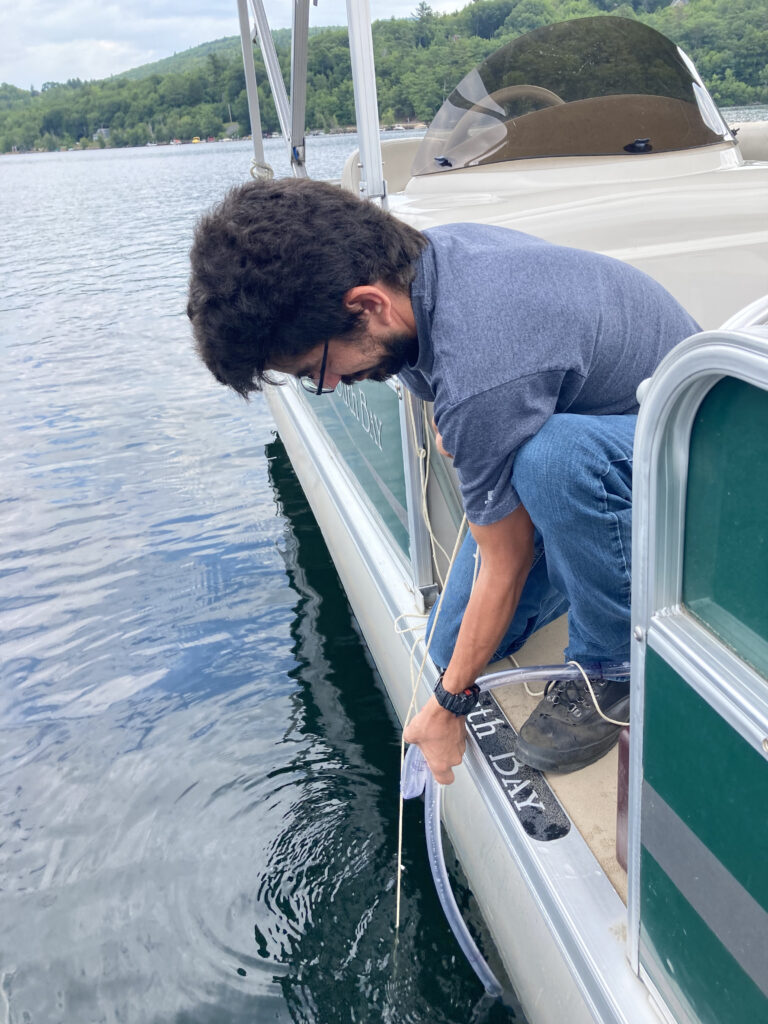
During a recent trip out to the lake from Grey Rocks Conservation Area, we discovered a deceased loon floating along the channel bank. The Newfound Lake Region Association has been working diligently with the Loon Preservation Committee to collect and exchange lead tackle used by anglers in an effort to prevent lead poisoning, which is the number one cause of adult loon deaths in New Hampshire. The loon was collected and transferred to the LPC, which determined the loon we found had died of natural causes. Earlier this year, another loon death on Newfound was confirmed to be caused by lead poisoning, driving home there is still a lot of work to do. Learning about the dangers of lead poisoning to wildlife lit a fire in my soul to educate the community in order to secure a lead-free future for Newfound Lake. If you have lead tackle in your tackle box, drop it off with Lake Hosts at Wellington State Park or Grey Rocks Conservation Area.

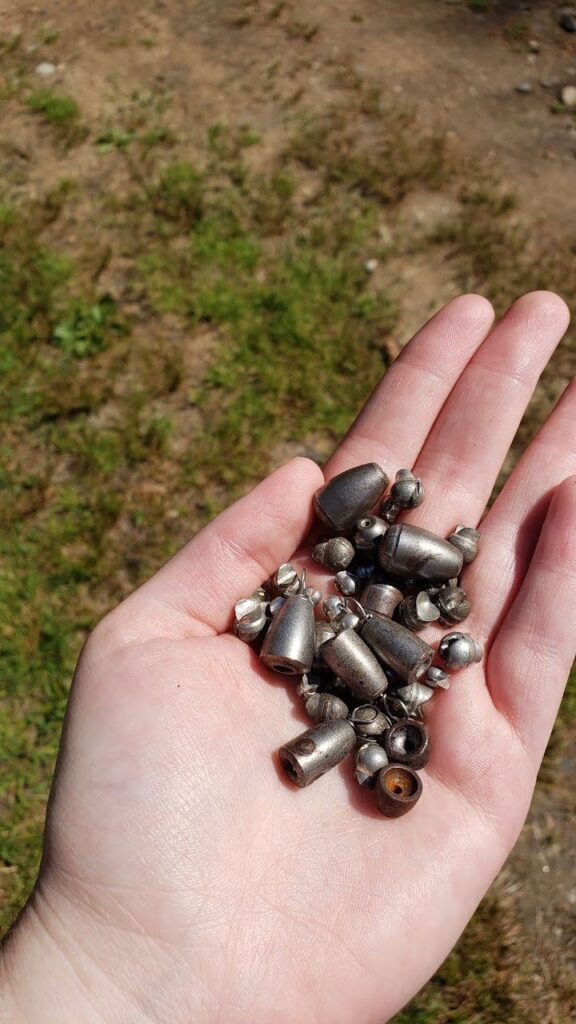
NLRA’s recent Weed Watcher Training educated volunteers and staff on the various types of aquatic invasive species to look out for. Weed Watchers are volunteers that regularly monitor the perimeter of Newfound Lake for signs of invasive aquatic plant infestations. Anthony and I continue to check boats for signs of invasive species during our weekend Lake Hosting duties, it was helpful to have a more hands-on training of the various types of milfoils and other vegetation we could potentially encounter coming into Newfound Lake.
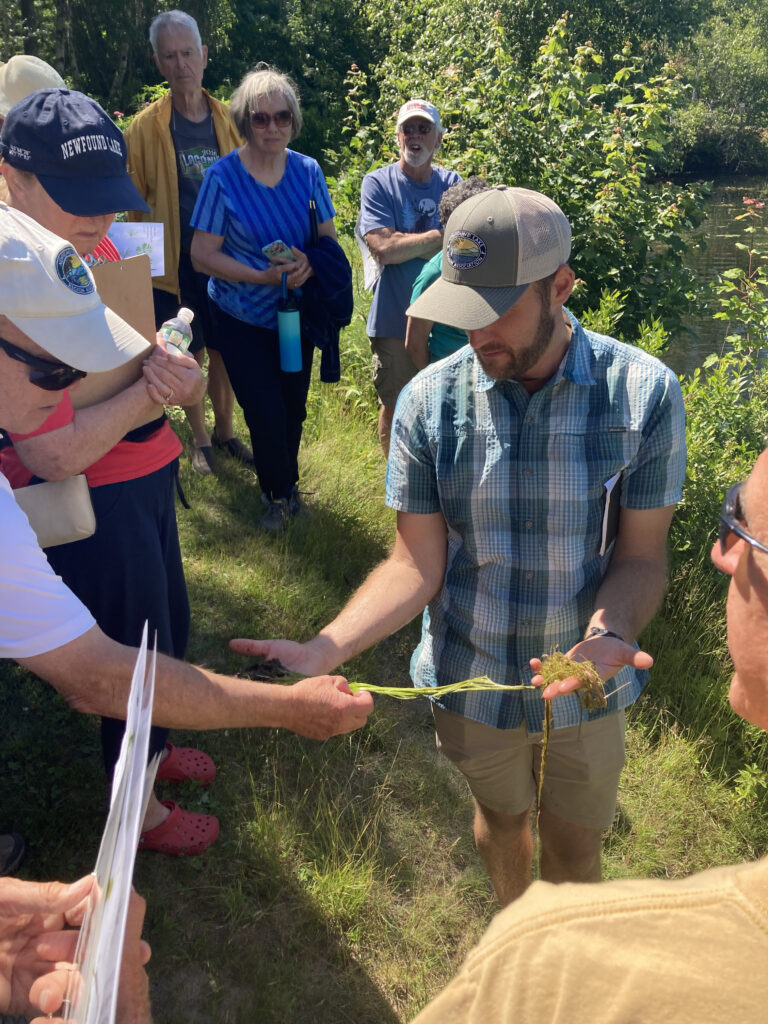
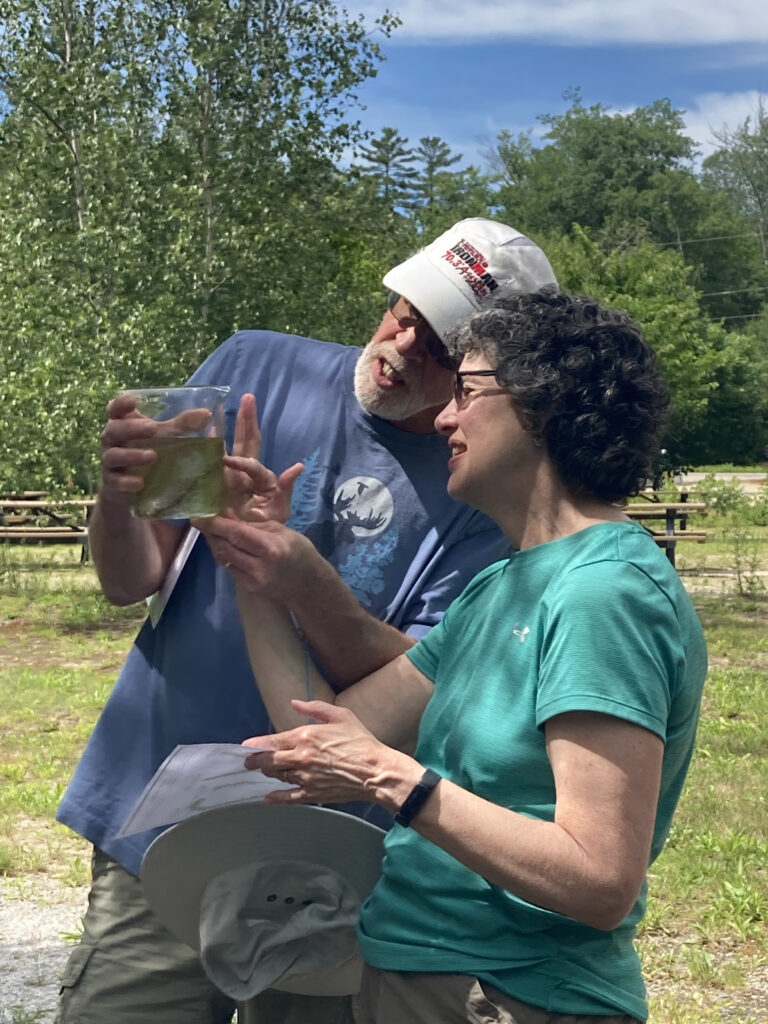
By the time this journal is published, I’ll have designed and led my first Guided Exploration program, “Women on the Water”, and my anticipation continues to grow faster than the weeds in the garden beds at Grey Rocks. Women on the Water is part one of a mini-series, Women in the Wilderness, geared towards getting women out into nature in a comfortable, judgment-free zone. Jumping into the vast unknown of the wilderness can be intimidating, especially as a solo woman. Having the opportunity to directly interact with women in the community and build their confidence in exploring natural areas, as well as deepening their understanding of the importance of land and water conservation and how to ethically utilize natural resources and minimize human impact, is more exciting for me than getting out on the water myself. Watching uncertainty of the unknown transform into a passion for exploration is what I hope to see these women achieve. Be sure to sign up for Women in the Wilderness and more NLRA programming at NewfoundLake.org/events. See yall out on the water!

